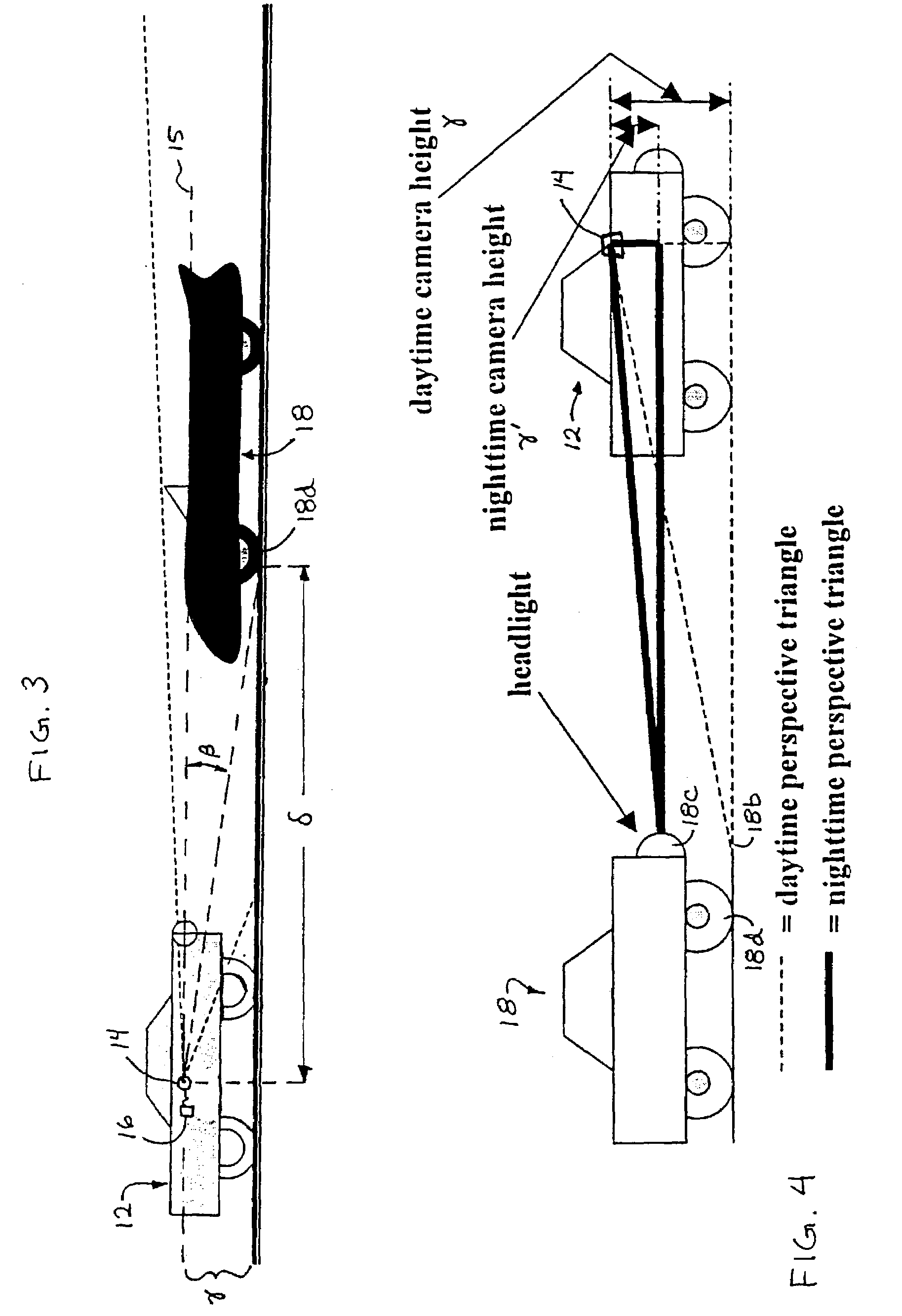Object detection system for vehicle
- Summary
- Abstract
- Description
- Claims
- Application Information
AI Technical Summary
Benefits of technology
Problems solved by technology
Method used
Image
Examples
Embodiment Construction
[0043]Referring now to the drawings and the illustrative embodiments depicted therein, an object detection system or imaging system, such as a lane change assist or aid system 10, is positioned at a vehicle 12 and is operable to capture an image of a scene occurring sidewardly and rearwardly at or along one or both sides of vehicle 12 (FIGS. 1–4 and 6). Lane change assist system 10 comprises an image capture device or sensor or camera 14 and a control 16 (FIGS. 3, 9 and 10). Camera 14 captures an image of the scene occurring toward a respective side of the vehicle 12, and control 16 processes the captured image to determine whether another vehicle 18 is present at the side of vehicle 12, as discussed below. Control 16 may be further operable to activate a warning indicator or display or signal device 17 (FIG. 10) to alert the driver of vehicle 12 that another vehicle is present at the side of vehicle 12. The warning or alert signal may be provided to the driver of vehicle 12 in resp...
PUM
 Login to View More
Login to View More Abstract
Description
Claims
Application Information
 Login to View More
Login to View More - R&D
- Intellectual Property
- Life Sciences
- Materials
- Tech Scout
- Unparalleled Data Quality
- Higher Quality Content
- 60% Fewer Hallucinations
Browse by: Latest US Patents, China's latest patents, Technical Efficacy Thesaurus, Application Domain, Technology Topic, Popular Technical Reports.
© 2025 PatSnap. All rights reserved.Legal|Privacy policy|Modern Slavery Act Transparency Statement|Sitemap|About US| Contact US: help@patsnap.com



